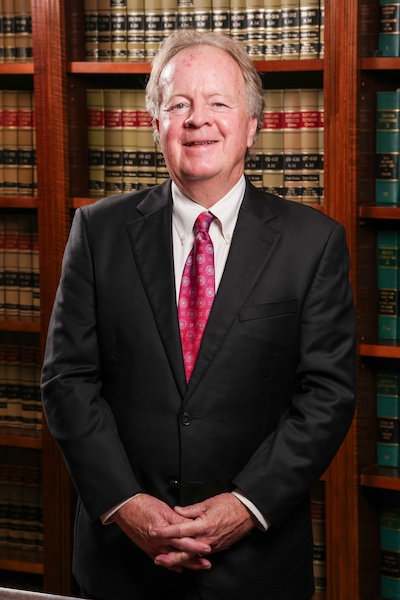At Clark and Steinhorn, LLC we have had the privilege of representing many people who have sustained quite serious injuries. Such an undertaking requires a lot of hard work and attention to detail. The victims of these incidents whether car or truck crashes are frequently in very trying circumstances, often unable to work and facing huge medical costs.
One would hope, perhaps even expect, that the system would be set up to help these people and their families. Sadly in many cases the opposite is true. The insurance industry often moves quite slowly in processing the information associated with claims, in many instances routinely assigning far too many cases to each adjuster.
If individual adjusters are burdened with more cases than they can possibly handle it is inevitable that more complicated cases with hundreds or thousands of pages of medical records are going to be moved to the back of the file drawer.
A second issue involves "authority" which translated means money. Individual frontline adjusters have a finite amount of money they can offer on any given case no matter how serious the injuries. A car accident victim may have a million dollar case but if it is initially assigned to an adjuster with $5000.00 in "authority" it means many more eyes must review the extensive records and bills.
As a case moves through the insurance company chain of command, more "authority" becomes available. However it is not a situation where the frontline adjuster with minimal authority identifies the million dollar injury case and sends it directly to the level of authority that is appropriate.
A next level supervisor may have double the amount of money or even ten times the money at their discretion but obviously ten times $5000.00 is $50,000.00 and not $1,000,000.00. Every insurance company is different in its monetary authority structure but what they all have in common is failsafe mechanisms to slow down the zeal to pay large amounts of money.
As an example, the author of this article was trying case in Prince George's County, Maryland against a driver who was insured by the nation's largest insurer. The offer on the case was zero dollars. The case went well at trial and the jury went out to deliberate and after two hours had not reached a verdict.
In trial lawyer circles a jury that is out for two hours means that they are not likely to render a defense verdict but rather have found in favor of the injured party and are grappling with what amount of damages would be appropriate.
The judge sent the jury home for the night to reconvene the next day, I asked the defense lawyer to see if his insurance company client wanted to reconsider its zero offer, given the length of the jury deliberations.He said sure and the next day informed me that the offer was six hundred dollars.Ten minutes later the jury requested a calculator and the panicked lawyer began calling adjusters and trying to work up the "foodchain" at the enormous insurance company.
Because the insurance company was intentionally designed to thwart hasty offers by limiting authority, the lawyer got nowhere before the jury returned a $156,000.00 verdict which exceeded their insured's coverage by $56,000.00. The insurance giant paid out far more then their policy limits precisely because they were intentionally designed to react slowly through multiple levels of management with differing amounts of authority.
In this instance this structure proved costly but it serves to slow down the claims evaluation process in all cases.
A third variable is the extent of turnover in the insurance industry. Insurance companies are notorious for underpaying their employees while simultaneously overburdening them with cases. As you might expect this results in turnover. It is common to have multiple different adjusters in a case involving serious injuries.
This is true because cases with severe injuries often require a long diagnosis and healing process. The claims settlement system contemplates one final resolution when all information and losses are known and that means a victim of a bad crash needs to have recovered completely or as close to completely as possible.
Sometimes this means that settlement can't be explored until years after the injurious incident and during those years the adjuster might change multiple times which makes consistent communication with the insurance company at best difficult. New adjusters have to relearn the circumstances and severity of a collision or other incident and learn the often complex medical issues of the claimant's treatment.
This slows down the process and sometimes the new adjuster or new supervisor has a different view of a case than their predecessor. This can result in a case that appeared close to settling suddenly transforming into a case that must move into a lawsuit and thus substantial further delay.
This thought leads to the final area discussed in this article, the insurance company doesn't have to offer a nickel on a case until a verdict lands in their lap. (see paragraphs 7-9) This means that the lawyer and his client may have provided every iota of information necessary to warrant a significant settlement offer only to find that the insurance company wants to do "discovery" in lawsuit to be sure.
Discovery is the process of informational exchange in a lawsuit where written questions (interrogatories) are answered under oath, documents are sought sometimes by subpoena, and the parties and witnesses are examined in person under oath at depositions.The discovery process can be a legitimate exercise in obtaining clarifying information about all manner of relevant things including prior injuries.
It also can be a delaying tactic and a waste of time.
The bottom line: serious injury cases in Maryland and elsewhere often take a long time to bring to resolution notwithstanding clear cut liability and catastrophic injuries and require superhuman patience.

